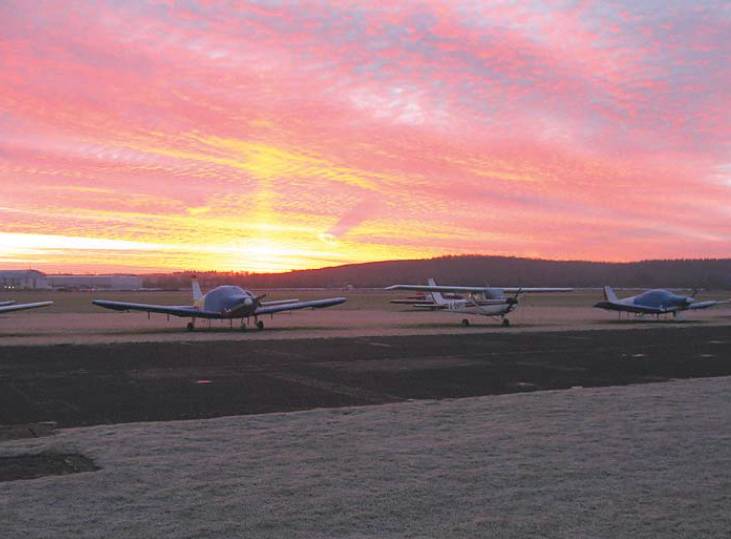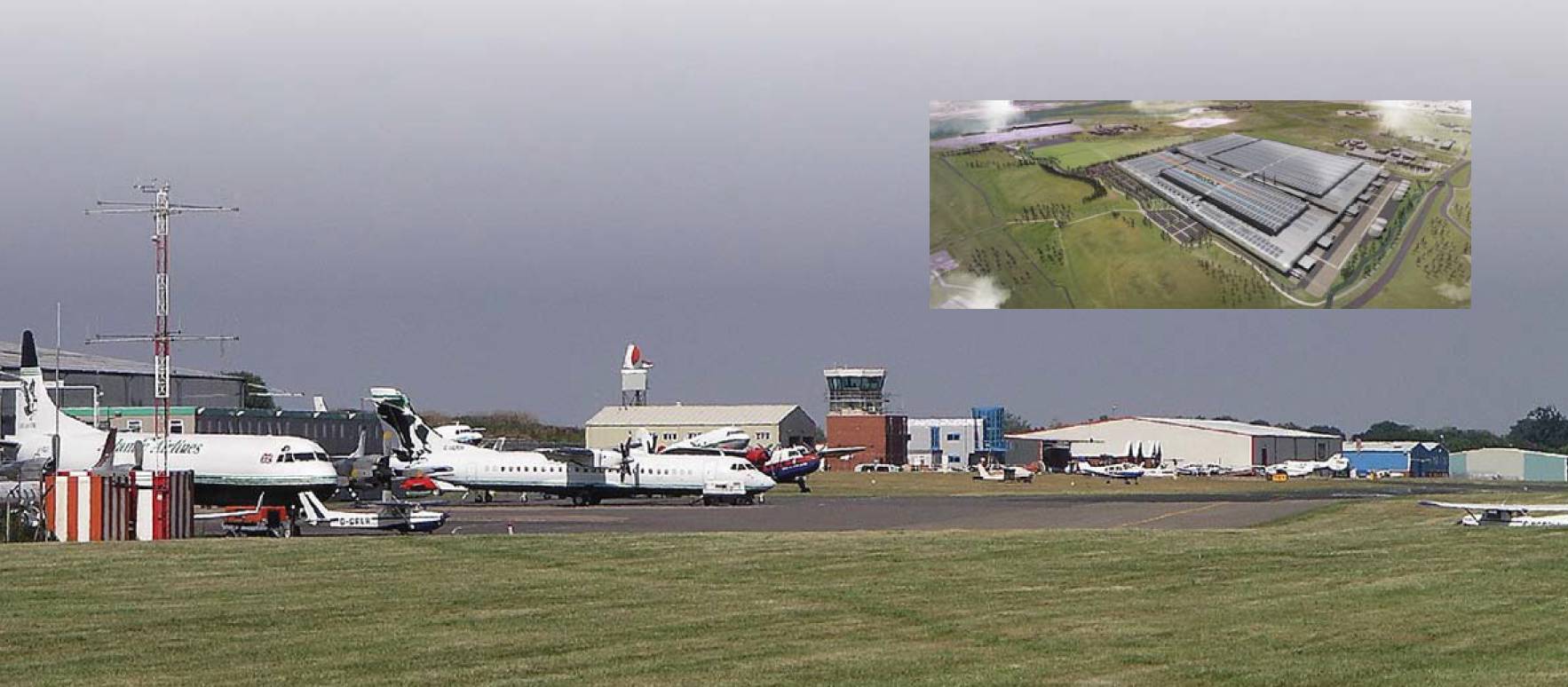GENERAL AVIATION UK light aviation policy
CHARLOTTE BAILEY* looks at the UK government’s public commitments to protecting and stimulating Britain’s provincial general aviation airfields – and asks whether its deeds have matched its words?
 “We want the UK to be seen as the best place in the world for aviation and this starts at the grassroots,” promised Aviation Minister, Robert Courts, ahead of the publication of 2021’s General Aviation Roadmap. By ‘grassroots’, he was of course referring to the grass – and tarmac – runways that comprise an absolutely essential element of general aviation.
“We want the UK to be seen as the best place in the world for aviation and this starts at the grassroots,” promised Aviation Minister, Robert Courts, ahead of the publication of 2021’s General Aviation Roadmap. By ‘grassroots’, he was of course referring to the grass – and tarmac – runways that comprise an absolutely essential element of general aviation.
However, despite the well-documented benefits of a thriving GA sector – “directly provid[ing] £3bn of Gross Value Added to the UK economy every year” and forming “the foundation for the much broader £60.6bn UK aviation sector” – increasing numbers of airfields are fighting the threat of closure.
So just what is being done to protect these irretrievable assets, and are the government’s promises to help safeguard “GA infrastructure that is appropriate in its extent, capability and location, and enables GA activities to thrive” being kept?
Britain’s disappearing airfields
Decades of post-war decimation have already seen a network of some 600 licensed aerodromes reduced to a little over a hundred – an ever-increasing problem for GA users. With land at a premium, rising demand for housing – alongside other lucrative development opportunities – has turned many an eye towards airfields’ ample acreage.
 Sunset at Wellesbourne airfield.
Sunset at Wellesbourne airfield.
Coventry airfield made mainstream media headlines over the past months as the site of a proposed ‘Gigafactory’ development, but it is by no means an isolated incident. The All-Party Parliamentary Group on General Aviation (APPG) state that every licensed airfield in Surrey is under threat, only one remains in Hertfordshire and 22 counties have no licensed airfields whatsoever. Unlicensed facilities are by no means exempt from the threat of closure either.
The perceived need to build an extra 300,000 homes a year is, undoubtedly, impacting GA facilities. Current proposals would see up to 3,300 homes built on the central section of Elvington’s runway, a further 4,000 on adjoining land at Tollerton, and the entirety of Popham is provisionally shortlisted for a 3,000 home development – to name but a few. Plans for Government Garden Villages – developments of up to 10,000 new homes – are affecting Deenthorpe, Long Marston, Abingdon and North Luffenham (the latter two subject to MoD disposal). Another ex-military site, RAF Wethersfield, is facing proposals that would see two substantially sized prisons erected on its site. The only certainty? Be they big or small, when an airfield disappears from our half-million maps, it is all but impossible to reinstate.
Admittedly, the issue of airfield ownership is vastly different in the UK compared with other nations. With the exception of one, every commercial airport in the US is owned and operated by public entities (including local, regional or state authorities) and largely funded by users. French airports outside of Paris are mostly owned by state or regional authorities; it is a similar situation in Germany. However, since the privatisation of UK airports in 1986, publicly-owned facilities quickly became privately-owned commercial assets. The UK government no longer owns any UK airfields outright (although a number of regional airports come under local councils’ ownership). When the Department of Transport promised privatisation would “encourage more innovative management” nearly 30 years ago, could they have predicted that “innovation” to involve what some describe as sacrificing public assets for private profit?
'A lifeline of support’
Fast-forward to the present day, and the Department for Transport (DfT) maintains it is still advocating for the continued advancement of the UK’s airfield network. Aviation Minister Robert Courts, Secretary of State at the DfT, stated in 2021: “It is clear from the success of our aviation sector there is a national need to protect and enhance our strategic network of GA airfields – to ensure they continue to prosper and drive the economic growth this country needs and to support levelling up right across the country”. How to we ensure this levelling up does not entail the levelling of land with bulldozers?
Alongside his General Aviation Roadmap, Courts announced the launch of the Airfield Development Advisory Fund (ADAF) “to provide advice and support to help airfields thrive”, as well as the new CAA Airfield Advisory Team. Funded by the DfT, the Airfield Development Advisory Fund offered a “lifeline of support” to aerodromes handling fewer than 200,000 passengers: over a period of up to five days in 2021, each applicant received a package of support, including business planning and operational advice. Yet, while the statistics are encouraging – a high success rate with 90% of applications approved – it is of little use for the airfields condemned to close entirely.
Coventry (Baginton) airfield has been the focus of a proposed redevelopment campaign as far back as February 2021, when a public-private ‘joint venture’ partnership was announced between Coventry City Council and the Rigby Group, the current airfield owners. As many tenants complained of the “systematic running down” of the airport’s facilities, speculative plans earmarked the aerodrome for development as the UK’s first ‘Gigafactory’ (producing batteries for electric cars) and the West Midlands Combined Authority formally endorsed Coventry Airport as its preferred Gigafactory location.
An official outline planning application (cited as ‘mission critical’) was lodged in July 2021, and speculative planning permission (still with no end-user secured) passed in January 2022. Much to the devastation of the airfield’s supporters, Secretary of State for Housing the Rt Hon Michael Gove declined to ‘call in’ the application, leaving the decision essentially unchallenged.
The planning committee’s so-called success at the Coventry site highlights a number of alleged shortcomings into the apparent ease with which an airfield can be closed. In accordance with an obligation in the National Planning Policy Framework, the airfield’s status as green belt land (largely preventing redevelopment) can only be altered in “exceptional circumstances” which need to be “fully evidenced”. One might assume these would, at the very least, specify a user for the proposed Coventry Gigafactory, but the speculative redevelopment proposals were passed regardless, despite market leader Britishvolt having already rejected the site.
 Coventry Airport (inset) Britishvolt’s proposed gigawatt factory. Snowmanradio
Coventry Airport (inset) Britishvolt’s proposed gigawatt factory. Snowmanradio
Planning construction
Elsewhere, existing planning frameworks also offer attractive opportunities for would-be developers: following what some cite as an ‘administrative oversight’ regarding a footnote in a 2003 Planning Policy Framework document, airfields are currently classified as brownfield land (which unlike ‘untouched’ greenfield sites, are often easier to acquire permission to redevelop). Although this is said to be under review, there is no guarantee the Planning Policy Framework will provide adequate protection for airfields under threat.
‘Mixed-use’ solutions do, on the surface, appear to offer an alternative to complete closure of an airfield. It is a solution that seems to work for North Weald, Essex, which hosts one of the largest weekend open-air markets in the UK. However, there is no guarantee that mixed-use options will not invariably impact GA activities on-site. In April 2022, Thatcham Research – which undertake car safety trials – completed its takeover of Gamston Aviation in Nottinghamshire, maintaining ongoing aviation operations, yet forcing aircraft to share runway space around the requirements of vehicle testing. Any disruption caused to GA activities by this dual-purpose facility remains to be fully documented, although the CAA Airfield Advisory Team is in full support of the venture.
Should Coventry Airport close, a number of businesses – from training facilities, globally significant maintenance facilities and specialist consultants – will be directly affected, something one tenant described as “a reflection on the contempt… held by property developers who clearly place us within the collateral damage folder”. However, the unique opportunity to inspire and educate the skilled professionals of tomorrow will also be impacted. And that is without the loss of the historic aircraft based on-site, including the world’s last airworthy ex-RAF Vampire jet. Contrary to what the general public might perceive, a runway represents so much more than a so-called playground for privileged PPL-holders flying in on a sunny Sunday afternoon. Educating a wider audience about the benefits afforded by GA – both directly and indirectly – would appear to be of paramount importance, yet seems to fall to individuals and organisations at the ‘grassroots’ level to attempt. However, it is by no means easy, as the museum at Wethersfield will attest, labelled of “no significant heritage” by the local District Council and scheduled to be evicted from the site come June.
 A motor glider at Wellesbourne. Stan Shires
A motor glider at Wellesbourne. Stan Shires
Saving Coventry
The pressure group ‘Save Coventry Airport’ may have drawn significant public support online and via open days (attracting hundreds of visitors, alongside national TV news crews), but what an airfield really needs is an owner-operator sympathetic to its fundamental purpose: aviation.
Andy Bell, CEO of Regional and City Airports, claimed “Coventry Airport has been working hard to deliver the best possible outcome for the region.” Quite what that precise outcome entails is unclear. Under the title ‘Regional and City Airports’, the Rigby Group also own Bournemouth, Exeter and Norwich airports. Could these too fall foul of a ‘land-grab’ that disregards the inherent value of ongoing aviation activity?
IT IS ALSO WIDELY RECOGNISED – FROM GRASSROOTS TO GOVERNMENT – THAT GA PROVIDERS HAVE A VITAL FUNCTION TO FULFIL, AND ARE AN ASSET WORTH FIGHTING FOR
Surely, something could be done?
In the case of Coventry’s closure, the Secretary of State for Transport, the Rt Hon Grant Schapps MP – a keen private pilot himself – came under accusations of ‘diverting public money’ to a lobbying group, which was in fact his non-regulatory ‘CAA Airfield Advisory Team’.
This organisation was set up to provide advice to GA airfields, although a scathing stakeholder update in April 2022 claims “this has proved to be a bit of a failure in its ability to understand what is required… it has not been a success.”
All party Parliament Group group
Enter the APPG on General Aviation (the APPG), whose membership currently stands at 208 parliamentary members. The APPG also state its belief that “a network of General Aviation airfields must be protected and enhanced by the government”, adding a due sense of urgency as they note: “without a shift in government policy the UK will, by default, exit both GA and overall aviation as a critical sector of our economy within a generation.” Actions speak louder than words, so the APPG oversees several Working Groups encompassing STEM, airfields, airspace, engineering and manufacturing, and heritage issues. In particular, the Airfields Working Group – which acknowledges “an important part of our national transport infrastructure is fighting for survival” – states its intentions to lobby departments across Whitehall to help protect our GA airfields. Rather than fighting the case for each airfield’s ongoing operation on an individual basis, surely a more unified approach – across all levels – would be of great benefit.
GAlvanising support
As things currently stand, the list of airfields at risk is significant, and unlikely to abate. However, despite the perceived shortcomings of various governmental groups, it is also widely recognised – from grassroots to government – that GA provides has a vital function to fulfil and is an asset worth fighting for. As the world begins to ‘bounce back’ from the unprecedented pressures of the global pandemic, our airfields’ enduring presence will comprise a key element of an expanding GA sector. An APPG stakeholder update from April 2022 expresses the intention to become “increasingly more active” as things “get back to normal” post-pandemic, so watch this space. The DfT is also advertising for a new GA Advocate, whose role is to “champion the GA sector and provide independent advice to ministers” – a position the stakeholder update described as “well intended but a totally mismanaged attempt to follow up on work done originally by Byron Davies”, the government’s first ‘champion’. Do you have what it takes to help make sure the government’s GA promises are kept?
*Charlotte Bailey is an aviation journalist and volunteer member of the Save Coventry Airport Group

 “We want the UK to be seen as the best place in the world for aviation and this starts at the grassroots,” promised Aviation Minister, Robert Courts, ahead of the publication of 2021’s General Aviation Roadmap. By ‘grassroots’, he was of course referring to the grass – and tarmac – runways that comprise an absolutely essential element of general aviation.
“We want the UK to be seen as the best place in the world for aviation and this starts at the grassroots,” promised Aviation Minister, Robert Courts, ahead of the publication of 2021’s General Aviation Roadmap. By ‘grassroots’, he was of course referring to the grass – and tarmac – runways that comprise an absolutely essential element of general aviation. Sunset at Wellesbourne airfield.
Sunset at Wellesbourne airfield.
